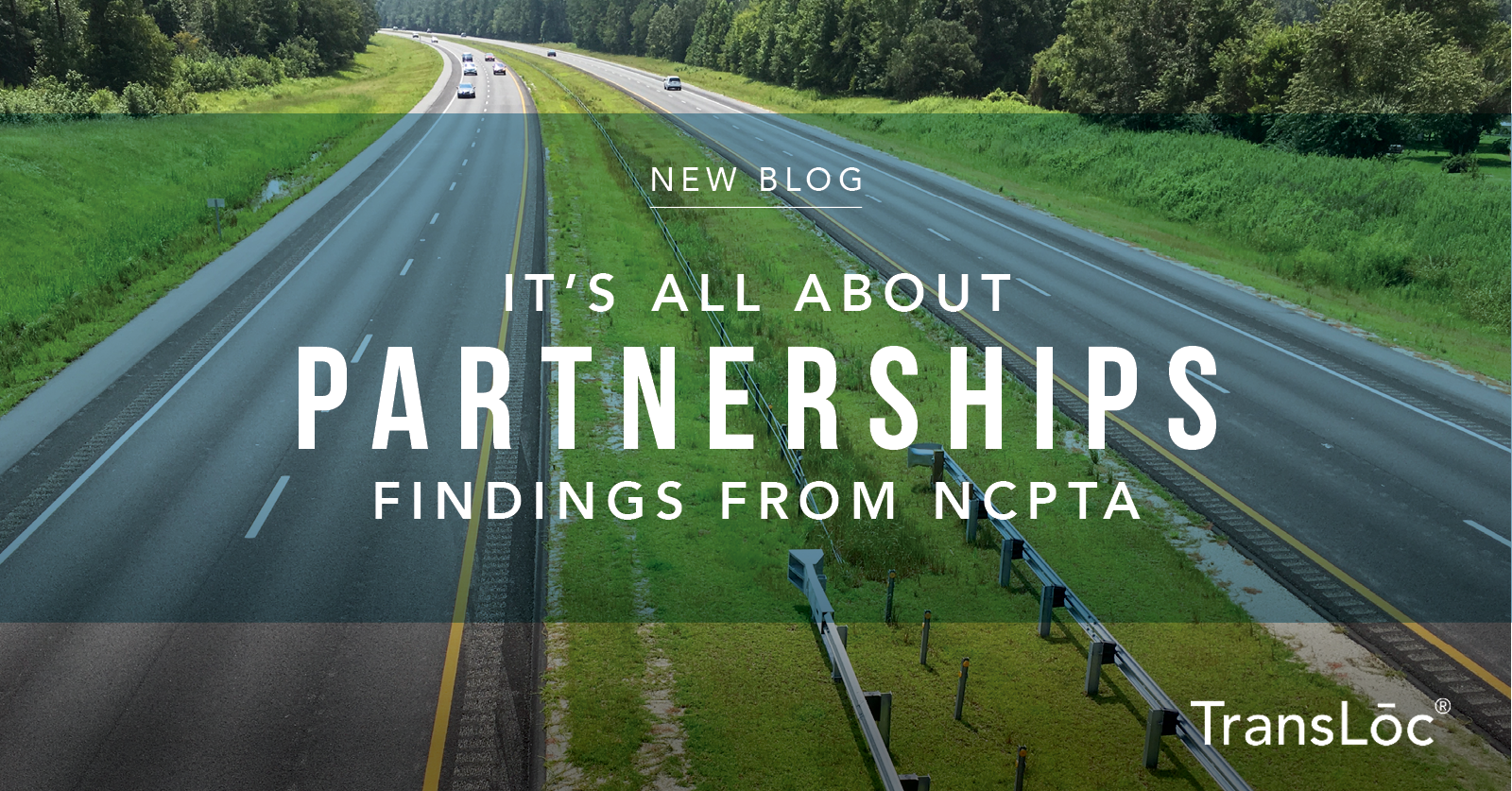
Transportation is doing a deep dive on finding ways to implement industry innovation while keeping the rider at the center of the conversation. This month, TransLoc’s business development team attended the North Carolina Public Transportation Association’s (NCPTA) 2019 Annual Conference and Expo in Wilmington, NC. Bringing together over 400 industry leaders from across the state, the conference covered the future of public transportation and how to maximize partnerships to remove barriers for riders.
Here are four takeaways gathered from sessions and conversations.
- Public Participation is a Key Partnership: Whether it’s naming a bus, launching a service, or taking one away, involving the community early and often is critical. This message was echoed consistently throughout several of the sessions at the conference. Empowering the public’s involvement in decisions that affect the community fosters a sense of ownership and pride. When you provide an opportunity for the public to become a part of your agency, you create a deeper commitment with these partners who interact with your services on a daily basis. Agencies should remain relevant in the way they communicate to the population and mindful about the way they are portraying themselves to the community. The service is not the point. It’s the means to an end which can ultimately create highly engaged riders who positively impact the community.
- Ease of Use is a Major Barrier: Fare payment, outdated technology, long delays, and incorrect information remain major barriers for those considering a trip on public transit. Commuters reported that the average use of mass transit would increase by 27 percent if it were easier to pay, with 47 percent stating the need to obtain different tickets for different modes of travel is a major issue. By shifting the focus to the riders and providing a better customer experience, public transit agencies can make it easier for passengers to take advantage of their offerings and give back to the community itself.
- Rethink Transit: Transit agencies need to move away from the linear thinking that the job is to get a bus from Point A to Point B. The focus should be on how do we move people efficiently? How do we help them contribute to the greater good of the community? It’s time for transit leaders to embrace this mind change by reimagining transit agencies as mobility integrators. This will evolve transit to focus on smarter, more flexible ways to get citizens where they want to go. We can make better use of taxpayers’ dollars by implementing transit efficiencies and spending less on physical infrastructure.
- Embrace Public / Private Partnerships: With the increased emergence of private mobility solutions, rider expectations have grown to demand higher quality service and choices. Rather than trying to compete with TNCs and other private transit providers, public/private partnerships offer a great way to allow each sector to do what it does best. Public transit agencies can work with private companies to connect riders to fixed routes to boost ridership and take passengers shorter distances around the urban core. This in turn, will allow public transit providers to focus their bus lines on high-demand areas. Public agencies can also help private companies to keep these services equitable, ensuring that everyone in the community is provided access regardless of demographic.
Overall, the NCPTA concluded that the revised focus of serving one’s community must be embodied by transit agencies as they strive to provide accessible and equitable service to each of its citizens. Transportation services should be designed to move people efficiently, enable them to have an impact on the community, and be easily accessible. Everyone can play a part by focusing on their strengths to connect riders and create seamless mobility. Here at TransLoc, we use this knowledge to not only encourage agencies to engage with their community, but design our products to be user-focused as well.
Did you attend the 2019 NCPTA Annual Conference and Expo? What were some of your key takeaways? Share your insights in the comments below.
Download our RideKC case study to learn how one agency delivered mobility to their community in a new way!